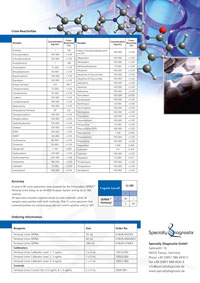The SEFRIA™ Fentanyl Assay will be the first of a new range of cutting-edge enzyme immunoassays, utilizing both synthetic and recombinant enzyme fragments of beta-galactosidase for superb sensitivity and vastly improved analysis.
Due to its extremely low cut-off, this assay is especially suited for the monitoring of transdermal patches and oral transmucosal Fentanyl citrate lollipops. The SEFRIA™ Fentanyl Assay is a strong screening tool to monitor compliance on the one hand, and for the detection of Fentanyl abuse on the other.






